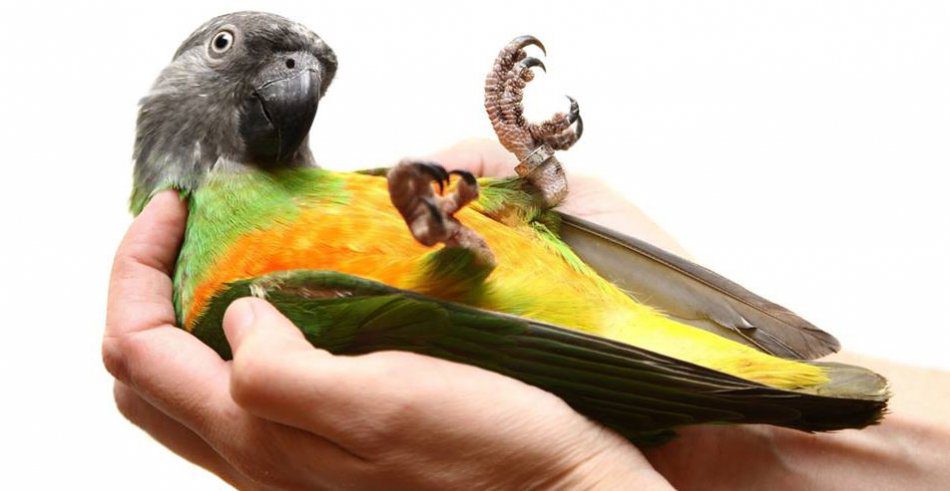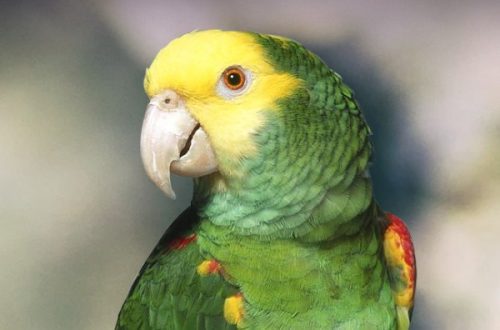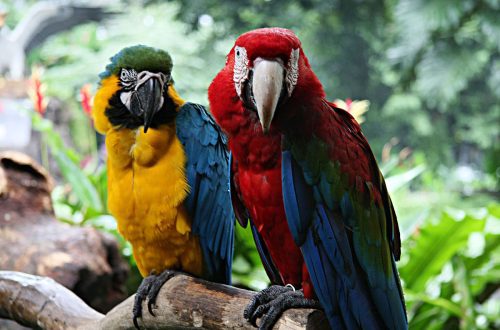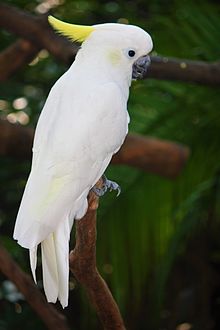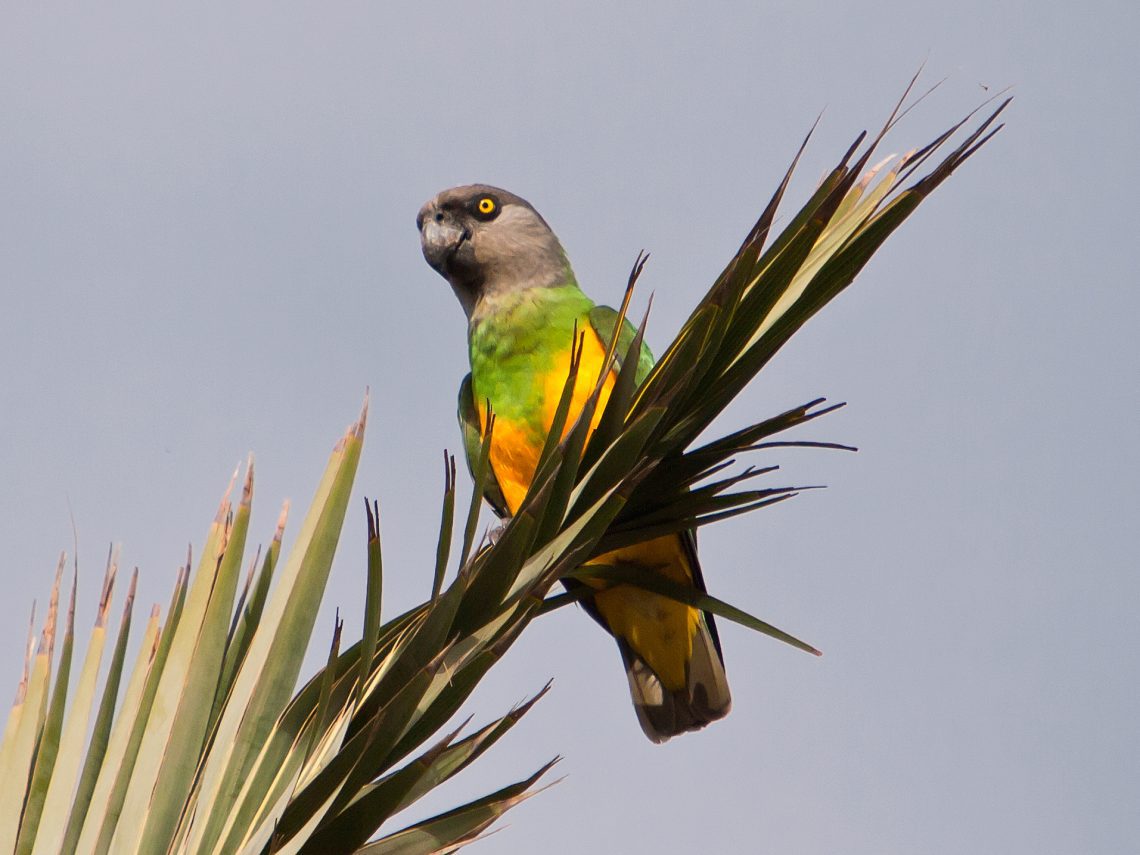
Senegal parrot (Poicephalus senegalus)
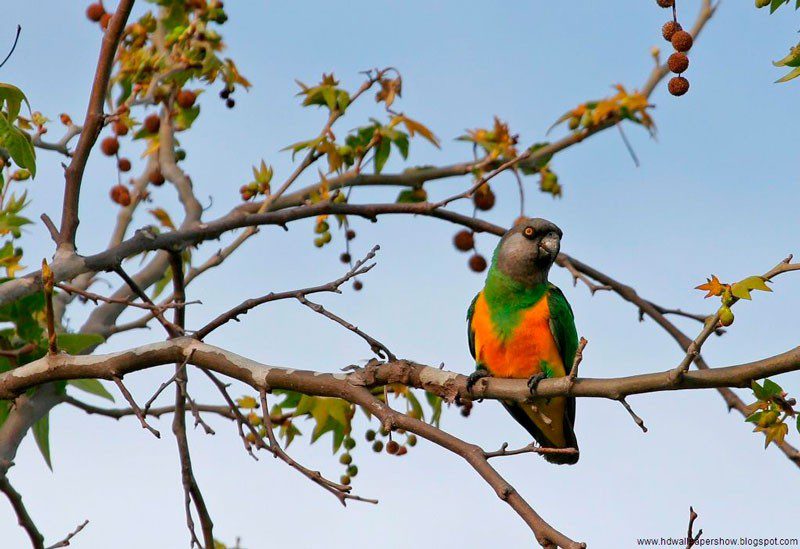 In the photo: Senegal parrot (Poicephalus senegalus)
In the photo: Senegal parrot (Poicephalus senegalus)
Order | Parrots |
family | Parrots |
Race | Parakeets |
View | Senegal parakeet |
Contents
APPEARANCE
The body length of the Senegalese parrot is from 22 to 25 cm, weight is from 125 to 170 g. The body is painted mainly green. The tail, wings and upper body are dark green. Belly yellow or orange. On the chest there is a wedge-shaped green pattern. The legs are pink and the “pants” are green. On a dark gray head – a massive black (with a grayish tinge) beak. The iris of young birds is dark brown, in adult parrots (over 12-14 months old) it is yellow. If the bird is worried, the pupil quickly narrows and expands. The female has a neater physique, a smaller and lighter head, and the beak is narrower than that of the male. The chicks have a dark gray head and ash-gray cheeks. Senegalese parrots live up to 50 years.
HABITAT AND LIFE IN THE WILL
Senegalese parrots live in West and Southwest Africa. Their home is savannas and wooded areas, the height is up to 1000 meters above sea level. These birds feed on flowers and fruits. They often feast on cereals, so farmers consider parrots to be pests. Tree holes are used for nesting. During the mating season, males perform mating dances: they raise their wings over their backs, puff up their plumage at the back of their heads, and make characteristic sounds. The clutch consists of 3-5 eggs. The incubation period is from 22 to 24 days. While the female incubates the eggs, the male forages and guards the nest. When the chicks are 11 weeks old, they leave the nest.
KEEPING IN HOME
Character and temperament
Senegal parrots are smart, quick-witted and sociable birds. They are not too talkative, but they can learn several dozen words and phrases. But, thanks to a developed intellect, these parrots can easily learn a variety of tricks. If a feathered pet is properly cared for and taken care of, it quickly becomes attached to the owner. However, it cannot stand competition, therefore it does not get along well with other birds.
Maintenance and care
Senegalese parrots are quite unpretentious, but the cage for them must be durable, all-metal, equipped with a padlock, which the parrot cannot open. Since the beak of these birds is huge (compared to the size of the body), it will not be difficult for him to get out of captivity if he finds a “weak link”. And as a result, both the room and the pet itself can be damaged. The minimum size of the cage: 80x90x80 cm. It must be equipped with tall hollow trees and comfortable perches. Be sure to let the Senegalese parrot fly freely, but the room must be safe. feeders, as well as the floor of the cage. There should be two feeders: separately for food and for small pebbles and minerals. The latter is necessary for the feed to be processed and assimilated normally. You will also need a bathing suit. You can spray your feathered friend with a spray bottle. To grind off the claws and beak, hang thick branches in the cage.
Feeding
For the Senegal parrot, food for medium parrots with the addition of vegetables, berries and fruits is suitable. Do not deprive your pet of greenery and twigs. But be careful: a number of domestic plants, vegetables, fruits (for example, avocados) are poisonous to parrots.



